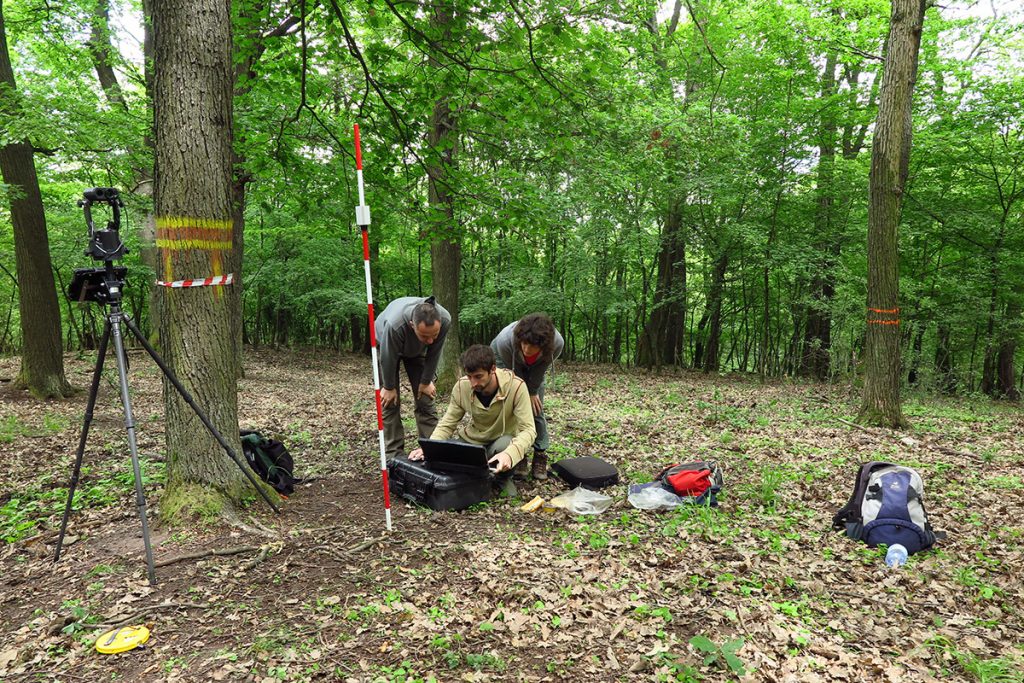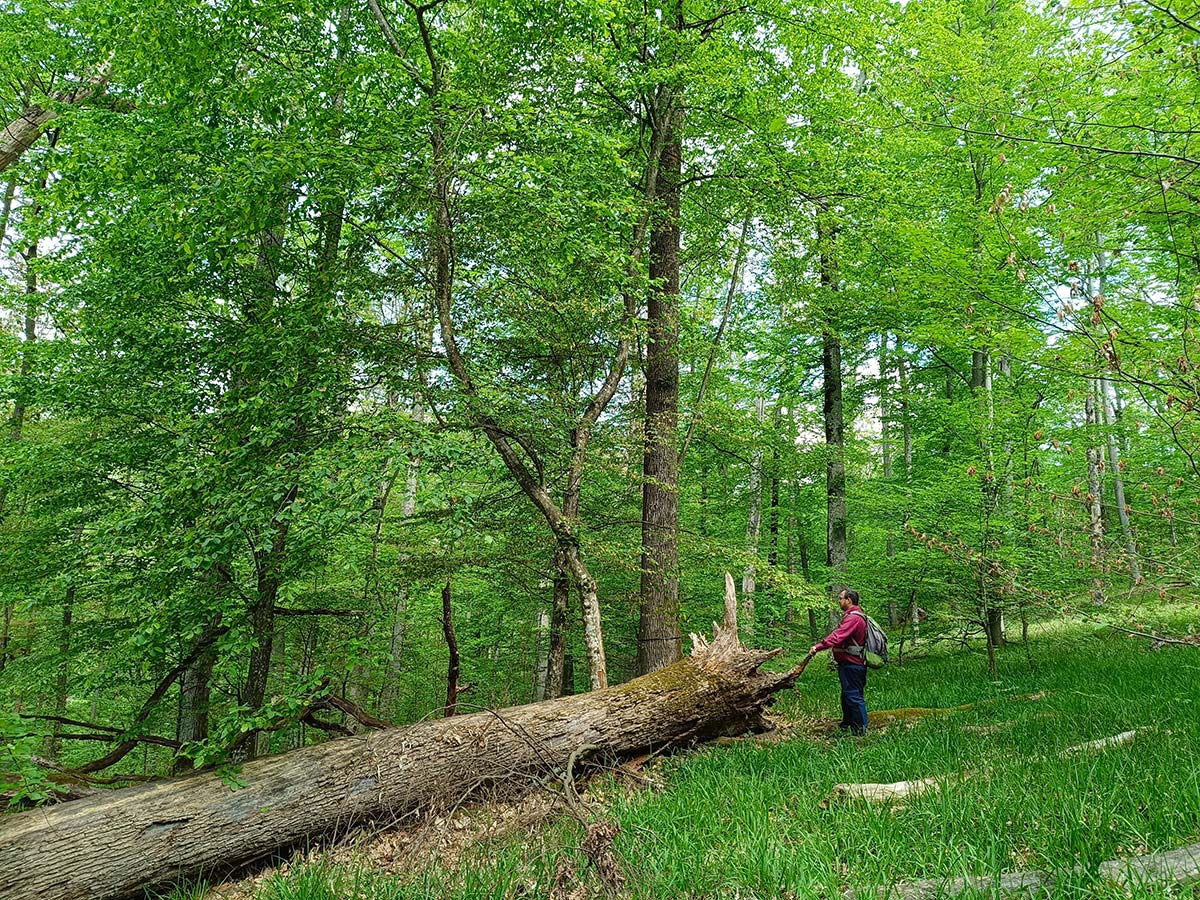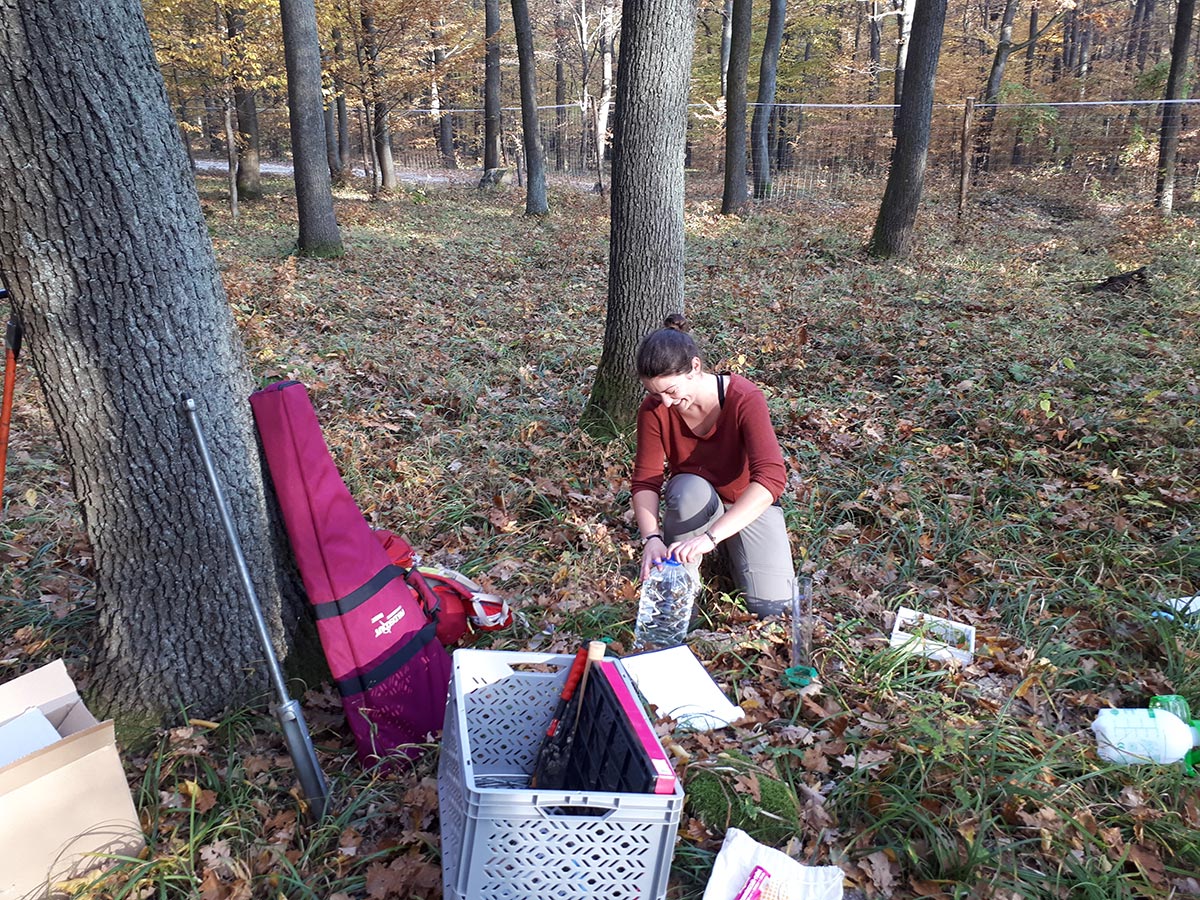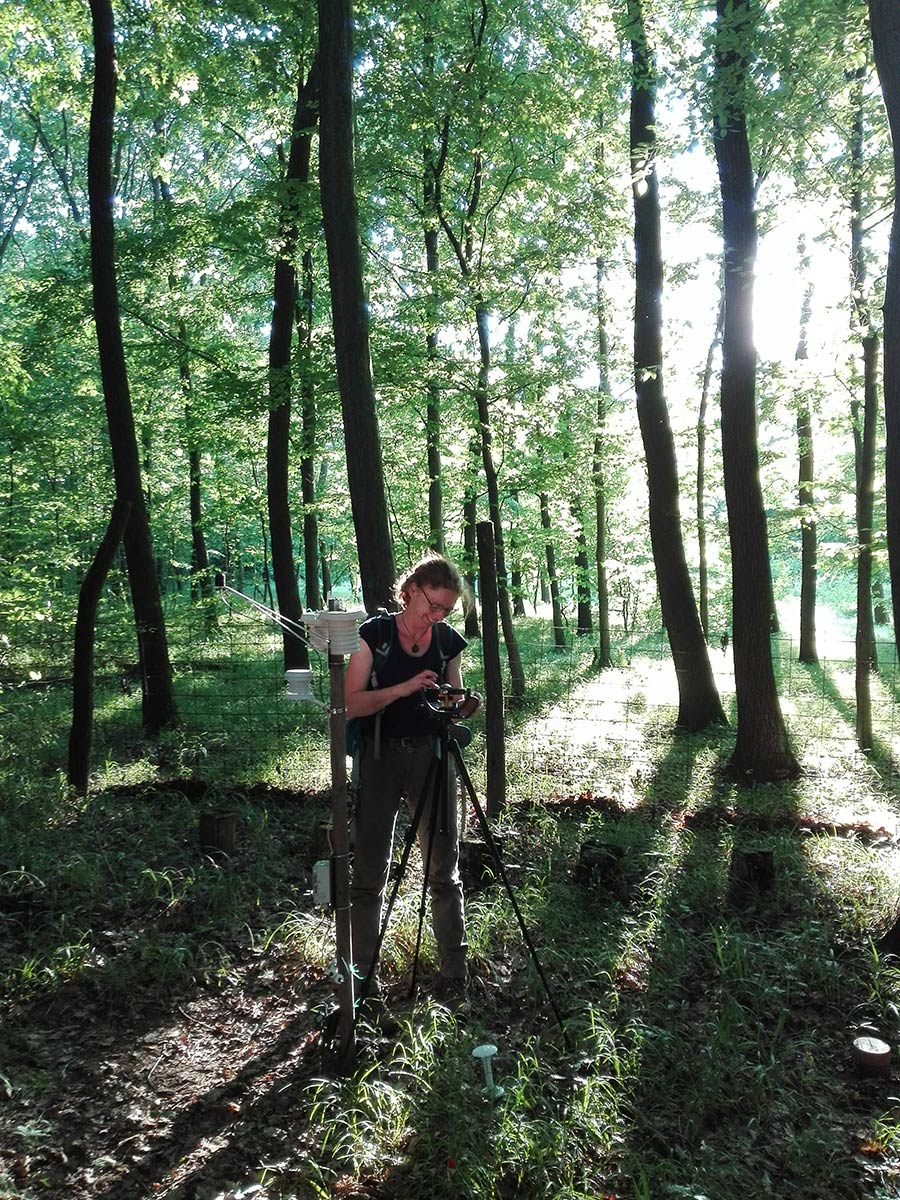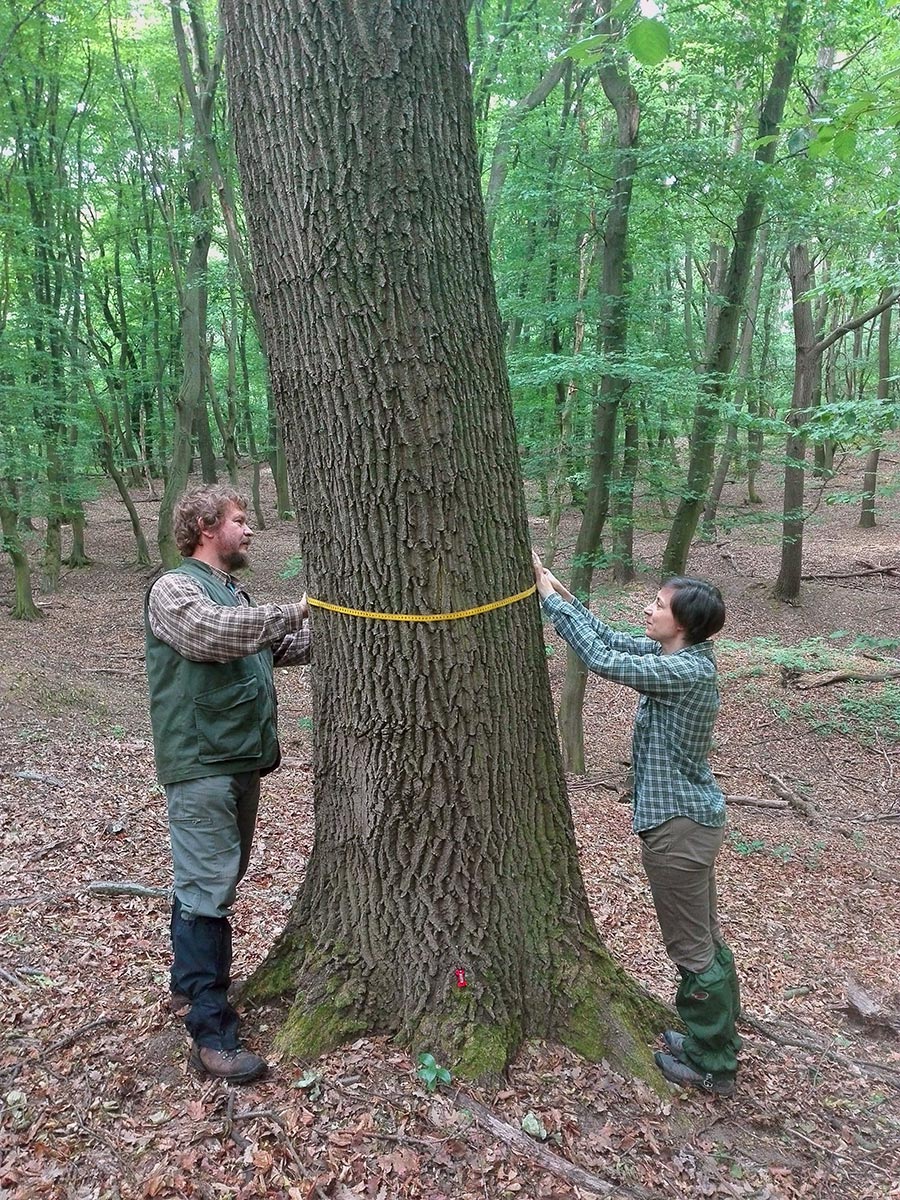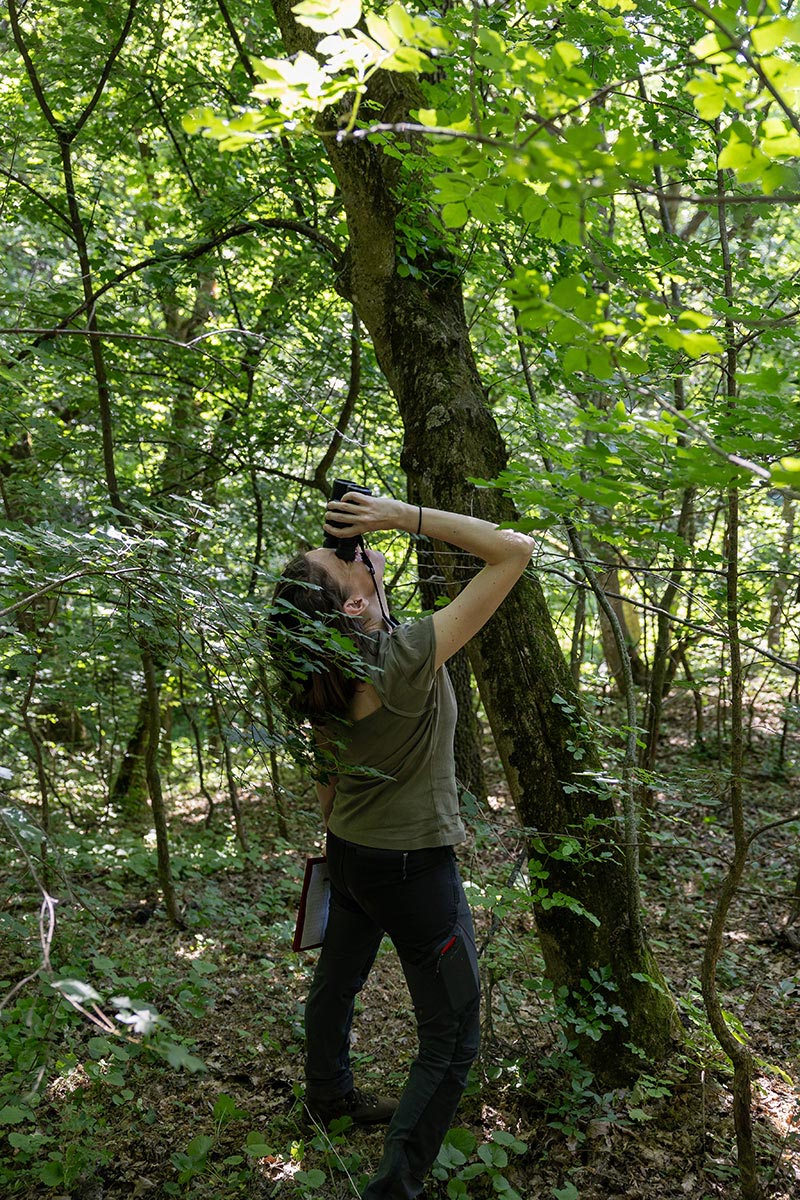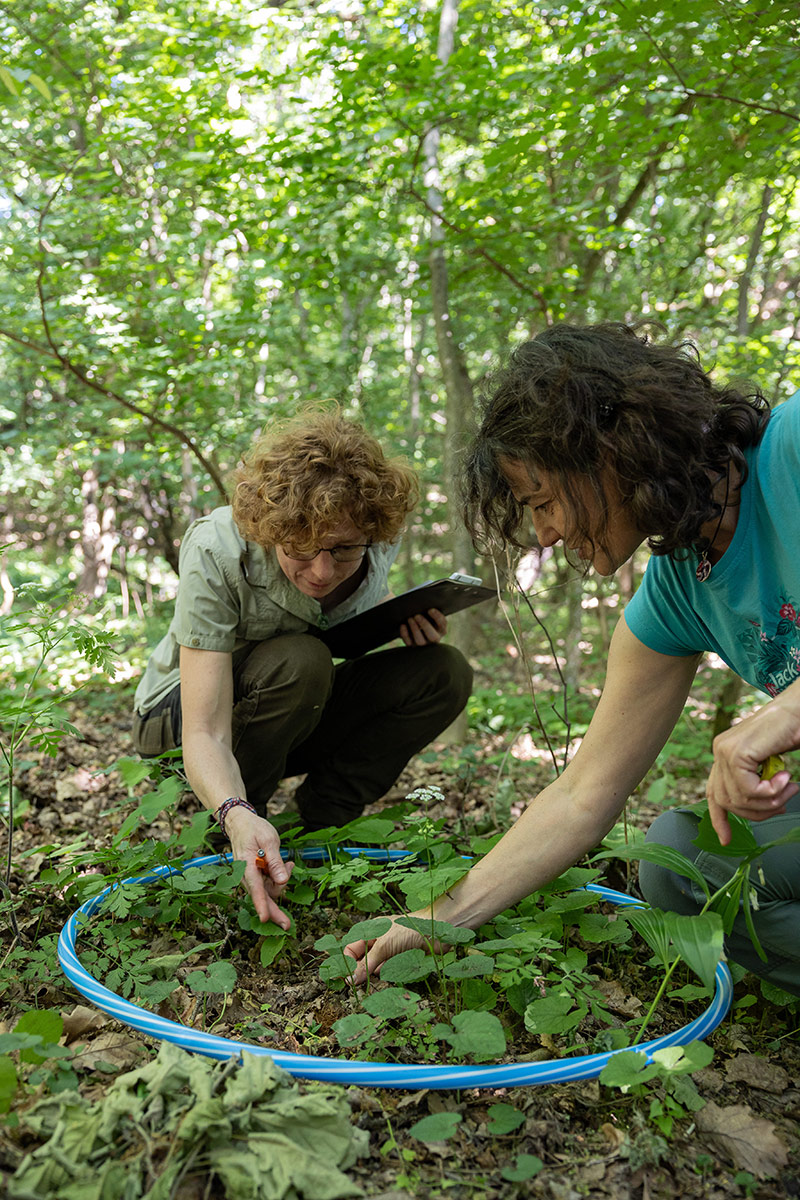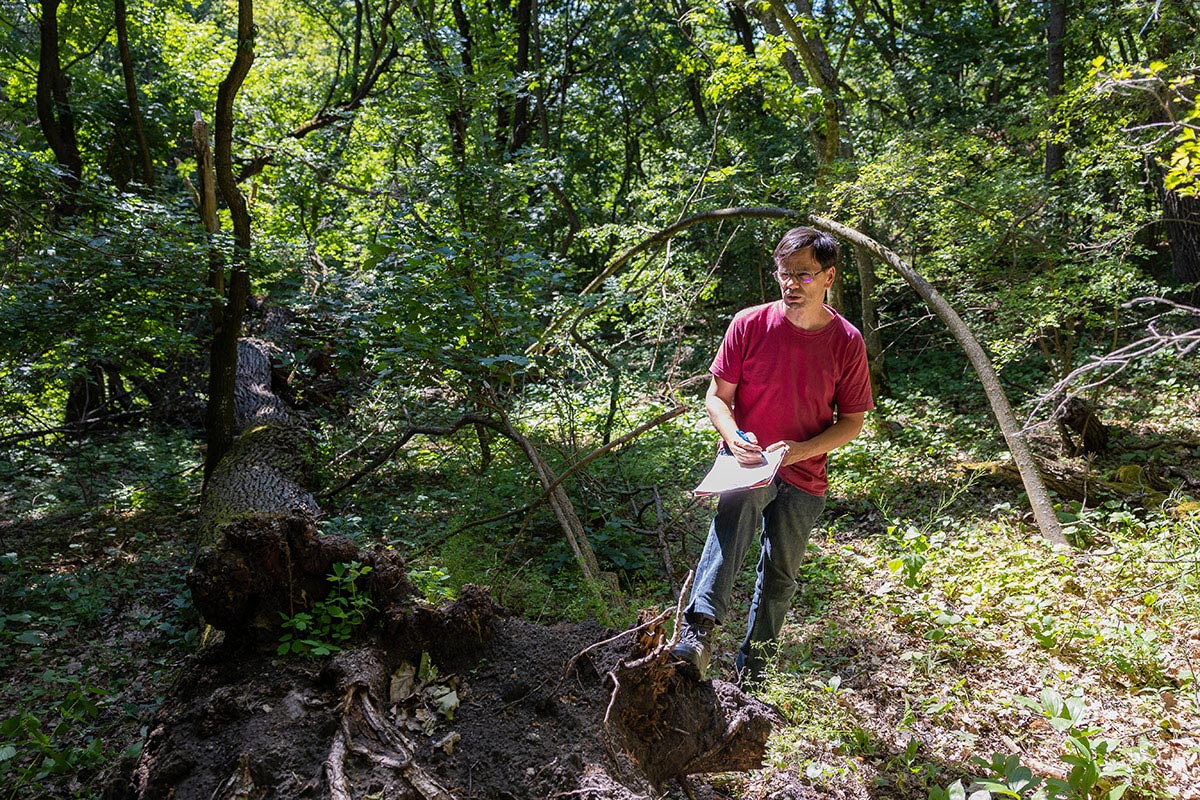
Research groups
Forest Ecology Research Group
Members of the research group:
-
Aszalós, Réka, PhD
research fellow
-
Bíró, Attila
assistant research fellow
-
Bölöni, János, PhD
research fellow
-
Farkas, Edit, DSc
Team Leader Scientific Advisor
-
Frank, Tamás
institute engineer
-
Horváth, Csenge Veronika
assistant research fellow
-
Horváth, Ferenc, PhD
institute engineer
-
Komlós, Mariann
assistant researcher
-
Kovács, Bence, PhD
research fellow
-
Németh, Csaba, PhD
institute engineer
-
Németh, Tamás
institute engineer
-
Szilágyi, Sarolta
assistant research fellow
-
Szmorad, Ferenc
institute engineer
-
Tinya, Flóra, PhD
research fellow
-
Veres, Katalin, PhD
research fellow
Main profile:
The Forest Ecological Research Group focuses on investigating species and functional composition, structure and dynamics of forests. The studies are mainly related to the deciduous forests of the Carpathian basin, including managed and unmanaged stands. The investigations include stand structure, many organism groups (plants, animals, fungi), forest site (microclimate, soil conditions) and biological processes (decomposition, predation, regeneration, effect of large herbivores). The current research projects of the group are (1) the effect of forest management on forest site, biodiversity and regeneration; (2) evaluation of ecological effects of continuous forest cover management; (3) investigation of the effects of conservation management on biodiversity in oak forests; (4) the importance of dead wood in biodiversity (bryophytes and fungi); (5) the effect of stand structure on the biodiversity of different organism groups; (7) inventorying and public monitoring of forest reserves; coordination of long-term research of Forest Reserve Programme to gain knowledge about natural life, diverse stand structure, long-term processes and rich wildlife of old-growth forests of Hungary; (8) community ecological and taxonomical investigation of lichens, lichenicolous fungi and the maintenance of Lichen herbarium VBI.
Selected publications
Bölöni János; Aszalós Réka; Ódor Péter.: Lack of large-diameter living trees and low structural diversity characterise managed dry-mesic oak forests in the Hungarian Carpathians FOREST ECOLOGY AND MANAGEMENT, 586, Paper: 122706 (2025)
2025
Tinya Flóra; Csépányi Péter; Horváth Csenge Veronika; Kovács Bence; Németh Csaba; Ódor Péter.: Fine-scale interventions can reinforce the forest character of the understory vegetation – The effects of different artificial gaps in an oak-dominated forest FOREST ECOLOGY AND MANAGEMENT, 578, Paper: 122471 (2025)
2025
Mariann Komlós; Zoltán Botta-Dukát; János Bölöni; Réka Aszalós; Katalin Veres; Dániel Winkler; Gábor Ónodi.: Tall, large-diameter trees and dense shrub layer as key determinants of the abundance and composition of bird communities in oak-dominated forests JOURNAL OF FORESTRY RESEARCH, 35. Paper: 62 , 15 p. (2024)
2024
Kovács Bence; Németh Csaba; Aszalós Réka; Veres Katalin.: Small oases below the canopy: The cooling effects of water-filled tree holes on the local microclimate in oak-dominated stands AGRICULTURAL AND FOREST METEOROLOGY, 353. Paper: 110058 (2024)
2024
Aszalós Réka; Kovács Bence; Tinya Flóra; Németh Csaba; Horváth Csenge Veronika; Ódor Péter.: Canopy gaps are less susceptible to disturbance-related and invasive herbs than clear-cuts: Temporal changes in the understorey after experimental silvicultural treatments FOREST ECOLOGY AND MANAGEMENT, 549 Paper: 121438 (2023)
2023
Horváth Csenge Veronika; Kovács Bence; Tinya Flóra; Schadeck Locatelli Julia; Németh Csaba; Crecco Lorenzo; Illés Gábor; Csépányi Péter; Ódor Péter.: A matter of size and shape: Microclimatic changes induced by experimental gap openings in a sessile oak–hornbeam forest SCIENCE OF THE TOTAL ENVIRONMENT, 873 Paper: 162302 (2023)
2023
Németh Csaba; Vega Marcel; Hernanz Jorge; Eckstein Jan; Janošík Lukáš.: Octospora entosthodontophila, a new smooth-spored bryophilous ascomycete on Entosthodon spp. HERZOGIA, 36 : 2, pp. 283-304. (2023)
2023
Aszalós, Réka; Thom, Dominik; Aakala, Tuomas; Angelstam, Per; Brūmelis, Guntis; Gálhidy, László; Gratzer, Georg; Hlásny, Tomáš; Katzensteiner, Klaus; Kovács, Bence; Knoke, Thomas; Larrieu, Laurent; Motta, Renzo; Müller, Jörg; Ódor, Péter; Roženbergar, Dušan; Paillet, Yoan; Pitar, Diana; Standovár, Tibor; Svoboda, Miroslav; Szwagrzyk, Jerzy; Toscani, Philipp; Keeton, William S.: Natural disturbance regimes as a guide for sustainable forest management in Europe ECOLOGICAL APPLICATIONS. 32: -
2022
Tinya, Flóra; Kovács, Bence; Bidló, András; Dima, Bálint; Király, Ildikó; Kutszegi, Gergely; Lakatos, Ferenc; Mag, Zsuzsa; Márialigeti, Sára; Nascimbene, Juri; Samu, Ferenc; Siller, Irén; Szél, Győző; Ódor, Péter.: Environmental drivers of forest biodiversity in temperate mixed forests – A multi-taxon approach SCIENCE OF THE TOTAL ENVIRONMENT. 795: -
2021
Bölöni, János; Aszalós, Réka; Frank, Tamás; Ódor, Péter.: Forest type matters: Global review about the structure of oak dominated old-growth temperate forests FOREST ECOLOGY AND MANAGEMENT. 500: -
2021
Samu, Ferenc; Elek, Zoltán; Kovács, Bence; Fülöp, Dávid; Botos, Erika; Schmera, Dénes; Aszalós, Réka; Bidló, András; Németh, Csaba; Sass, Vivien; Tinya, Flóra; Ódor, Péter.: Resilience of spider communities affected by a range of silvicultural treatments in a temperate deciduous forest stand SCIENTIFIC REPORTS. 11: -
2021
Kutszegi, Gergely; Siller, Irén; Dima, Bálint; Merényi, Zsolt; Varga, Torda; Takács, Katalin; Turcsányi, Gábor; Bidló, András; Ódor, Péter.: Revealing hidden drivers of macrofungal species richness by analyzing fungal guilds in temperate forests, West Hungary COMMUNITY ECOLOGY. 22: 13-28
2021
Komlós, Mariann; Botta-Dukát, Zoltán; Winkler, Dániel; Aszalós, Réka; Ónodi, Gábor.: Woodpecker foraging activity in oak-dominated hill forests in Hungary ORNIS HUNGARICA. 29: 82-97
2021
Kovács, Bence; Tinya, Flóra; Németh, Csaba; Ódor, Péter.: Unfolding the effects of different forestry treatments on microclimate in oak forests: results of a 4-year experiment ECOLOGICAL APPLICATIONS. 30: -
2020
Tinya, Flóra; Kovács, Bence; Aszalós, Réka; Tóth, Bence; Csépányi, Péter; Németh, Csaba; Ódor, Péter.: Initial regeneration success of tree species after different forestry treatments in a sessile oak-hornbeam forest FOREST ECOLOGY AND MANAGEMENT. 459: -
2020


